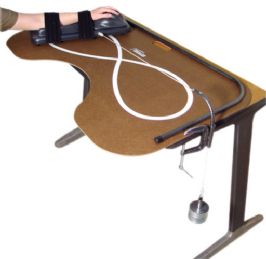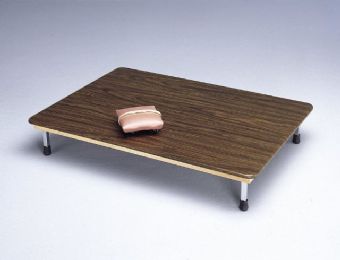


What is Range of Motion?
Range of motion (ROM) is a term that refers to the extent that a group of muscles or joints can be extended or flexed. By studying people in a wide range of physical conditions, researchers have come up with normal measurements for all the major muscle groups and joints. These measurements can be used to assess a patient. Many core exercises are aimed at increasing this range. People can also begin performing specific exercises that are designed to promote an increased ability to extend and flex various joints. This concept is related closely to flexibility.
For example, fold an elbow as much as possible into a flexed position and then straighten it out into a fully extended position. The difference between the flexed and extended positions expresses the range of motion in the elbow joint, normally given in degrees. For an elbow, the normal range of motion goes from 0 to 145 degrees.
When determining how easily a patient can move particular muscles and joints, a physical therapist or doctor will perform both passive and active measurements. In a passive measurement, someone gently flexes and extends the patient’s joint. In active measurements, patients move the joint or muscle themselves, sometimes working against resistance, such as a weight. Passive measurements are often higher, since the healthcare professional may be able to push the body more than the patient can.
A large assortment of conditions can affect range of motion, such as injury, disease, physical activity, trauma, and other events. Those with a limited range may get frustrated because they cannot take part in many common tasks. They can also be at an increased risk of injury and other medical problems as a result of their stiffer muscle groups and joints. For example, a person who cannot fully bend their knee joint may fall or injure the muscle groups in the leg easier.
Exercises such as yoga and Pilates can be used to supplement regular exercise routines. They can usually help increase range of motion by developing strong joints and muscle groups. They can also help lengthen muscles by pushing them. Specific exercises can be used to improve the ability of different joints and muscle groups to fully flex and contract. These exercises can be part of a physical therapy plan to help a person recover from a medical problem.
What are Range of Motion Exercises?
Range of motion exercises are specifically designed exercise routines used to help restore and maintain flexibility in the joints. This type of exercise is often started as part of the rehabilitation after surgery and as a way to keep conditions (like arthritis) under control. Some range of motion exercises can be performed without supervision, while others are intended to be performed under the direction of a helper or physical therapist.
There are three basic classes of range of motion exercises; passive, active-assistive, and active. In passive range of motion exercises, a helper manages all the movements for the person. They slowly work the joints so that stiffness cannot settle into the area. The application of passive exercise is typically applied within the first few days of recovery after having surgery on one or more joints.
Active-assistive range of motion exercises are done when patients are able to move their injured body part, but may require some help to move it. This ensures that further injury or damage does not happen. The assistance that helps move the body part can be from another person or from the patients themselves. It may also come from a mechanical machine or device. For example, after shoulder rotator cuff surgery, the arm may be allowed to move, but another person may assist the arm during motions to help limit the amount of stress that may happen. Active-assistive exercises are typically used after surgery or an injury when some healing has occurred and the muscle can contract. But, protection is still required to prevent damage to the healing body part.
In active range of motion exercises, the person is responsible for doing them and assessing the range during each repetition. This type of exercise is usually included as part of an ongoing maintenance program rather than recovery from some kind of physical trauma to the joints.
Different range of motion exercises work on different areas of the body to help restore and maintain flexibility. There are arthritis exercises that are used for anyone suffering from stiffness in the hands, wrists and elbows. Other exercises are performed to help patients recover from surgery, such as special knee exercises for those who have undergone knee replacement surgery. Shoulder exercises help to relax muscles while making it possible to enjoy a broader range of motion with the arms. Back exercises make it possible to bend at the waist and move the upper torso with minimal pain.
Before selecting specific exercises, it is important to seek professional help with all types of range of motion exercises. A doctor or physical therapist can evaluate the condition of the individual, and then design an exercise program that will give positive results while minimizing the chances of causing further damage to the joints. It is common for the first several sessions to be conducted under the eye of the therapist until the patients have a solid concept of how to do each exercise in the sequence. Once they know what to look for in the way of joint pain, discomfort or swelling, the therapist may allow them to do the exercises a certain number of times per week at home. This way, they do not need to report to the rehabilitation center for each workout.
Hulet Smith, OT
Rehabmart Co-Founder & CEO
lb